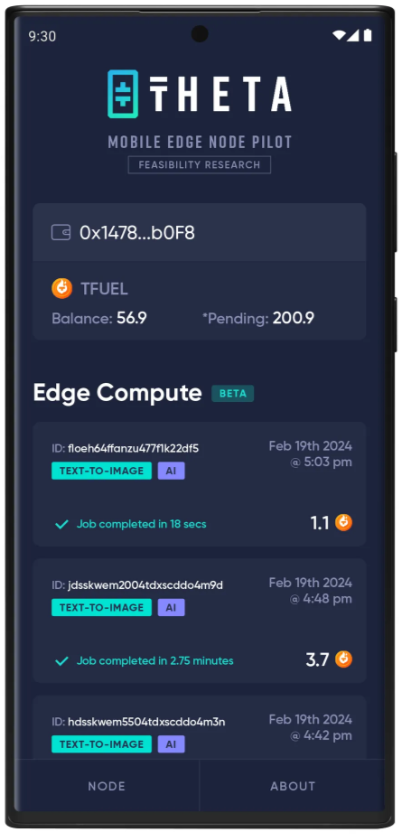Theta EdgeCloud and the 10,000+ active Edge Nodes around the world are the backbone that allows Theta to deliver fast, cost-effective compute work for AI and video applications over a decentralized network. As the Theta engineering team continues its core development of EdgeCloud for its first release on May 1, a separate and parallel R&D track is under way to launch a pilot of the Theta Edge Node for mobile Android devices in the next few months.
The goal of this initial pilot is to test the feasibility of leveraging up to 3.9 Billion active Google Android devices for certain types of AI computation workloads. Android today accounts for 70% of the mobile operating system market share across 190 countries, and provides an ideal platform to evaluate mobile CPU/GPU capabilities.
This also sets up the opportunity to target over 150 million active Android TVs globally that run the AndroidTV operating system from Sony, Sharp, Phillips and many more brands. While the average daily consumption of television today is around 3 hours, this leaves the device available the majority of the time for other types of computation and data sharing, especially as these always connected Smart TVs increase CPU and GPU capabilities over the next decade.
While intensive compute work is generally not feasible on mobile devices today, that is changing quickly. For example, TensorFlow Lite now enables on-device machine learning by allowing developers to run their trained models on mobile, embedded, and IoT devices and computers. It supports platforms such as embedded Linux, Android, iOS, and MCU. In the near future, these devices will be able to process more and more complex computations, and therefore become significantly more valuable as nodes on Theta EdgeCloud. Today’s devices can already run certain types of jobs on the Theta Edge Node, making the 3.9 billion Android devices worldwide a massive potential addition to Theta EdgeCloud. In the future, with the ability to serve GenAI, LLM inference, and text-to-image among other use cases, mobile devices running Edge Nodes can serve an AI market valued at $200 billion today, and projected to be worth more than $1 trillion in 2028.
The opportunity is to shift compute-intensive AI workloads to the edge as the cost of centralized GPU resources skyrocket from all the major cloud service providers, but this remains a challenging technical problem. For example, NVIDIA recently announced a private AI chat bot for desktops running RTX on Windows PCs equipped with NVIDIA GeForce RTX 30 and 40 Series GPUs with at least 8GB of VRAM. Theta EdgeCloud when fully launched in 2025 aims to seamlessly integrate high-end GPU capability from cloud providers with billions of mobile and smart devices in addition to desktops and laptops into a unified AI infrastructure layer. This opens up a vast market to process on-demand AI workloads optimized for cost, quality of service, privacy and device capabilities.
The Theta engineering team is excited to initially test with Google’s new experimental MediaPipe on device text-to-image generation solution for Android in the pilot launch of mobile Theta Edge node. The team is evaluating text-to-image generation based on text prompts using standard diffusion models as well as customized text-to-image generation based on text prompts using Low-Rank Adaptation (LoRA) weights. “Creating LoRA weights requires training a foundation model on images of a specific object, person, or style, which enables the model to recognize the new concept and apply it when generating images,” according to Google developer site.
The Theta team hopes you are as excited about this opportunity as we are, and invite you to participate in this pilot, share your feedback and resources as we continue to break new grounds in next-generation AI computing. As a final note, the initial expectation is that TFUEL staking will not be supported on Edge Node mobile pilot, and will be solely used for compute testing in this feasibility study.




























